Tune into the rhythm of São Paulo at the Arthur Casas-designed Pulso Hotel
Housed within a dramatic tower designed by Brazilian architect Arthur Casas, Pulso Hotel is where art, gastronomy and luxury hospitality revel

For the past 25 years, São Paulo, Brazil, has had less than a handful of hotels that could capture the imaginations of discerning global travellers, despite its sheer scale and sophistication as a gateway market – but this is finally changing.
The city is experiencing a boom in luxury hospitality – as recently witnessed with the opening of Soho House São Paulo – and residential development after an ambitious, years-long expansion of its subway system and corresponding changes to local zoning laws. The new regulations dramatically increase density around its new stations to help ease the infamous traffic problem and create vibrant, pedestrian-friendly high streets in a city that often hides its best behind walls and security gates.
Pulso Hotel, São Paulo
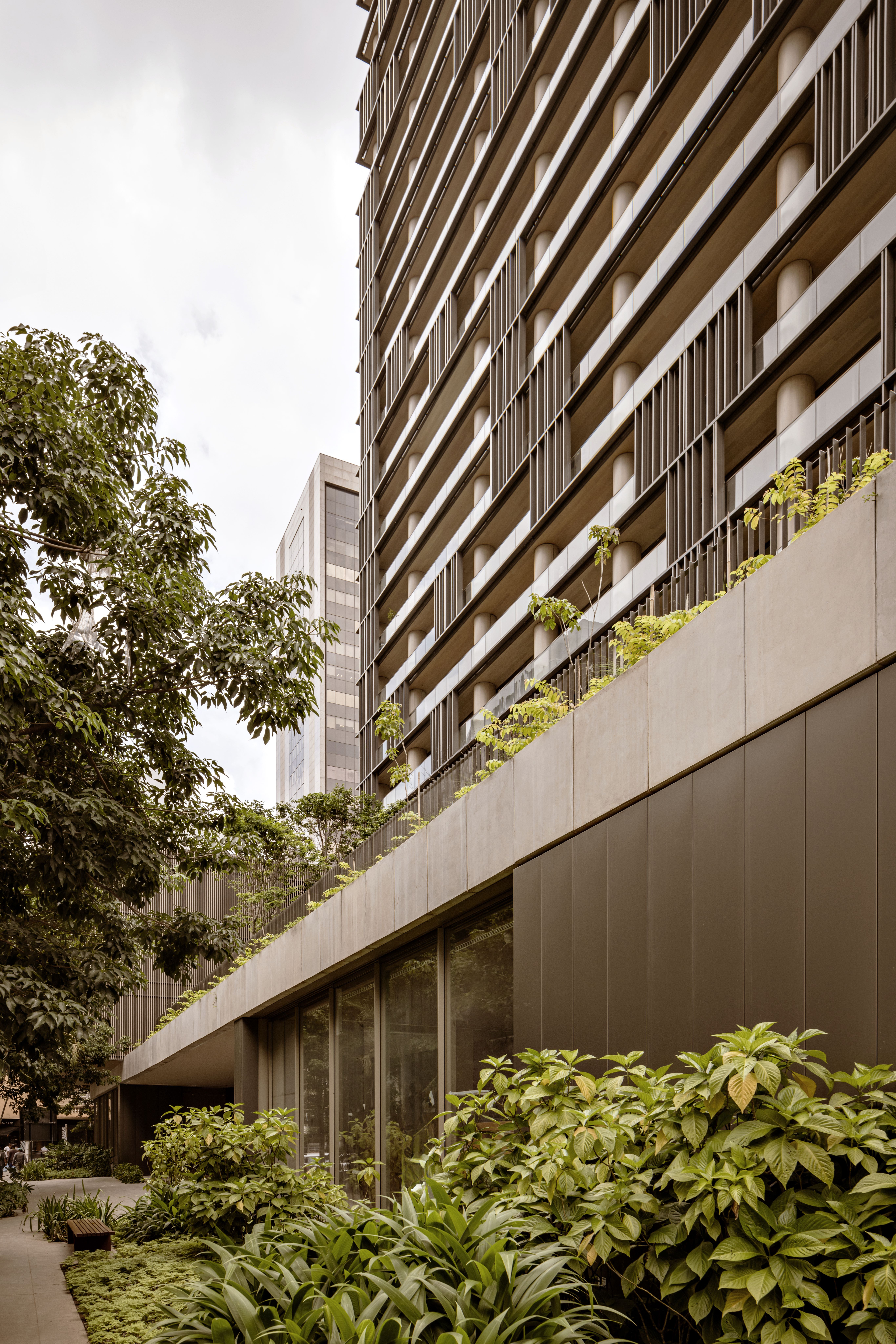
In the well-known neighbourhood of Pinheiros, São Paulo-based hotelier and developer Otavio Suriani has taken advantage of the changes to create the new 57-room Pulso Hotel, a throwback to the early days of boutique hotels that the city missed out on over the past two decades-plus. Suriani employed a time-honoured strategy, hiring a star architect, partnering with a top local restaurateur, and assembling an impressive group of experts to focus on their respective aspects of the project. The goal? To create a unique guest experience reflecting the city’s soul.
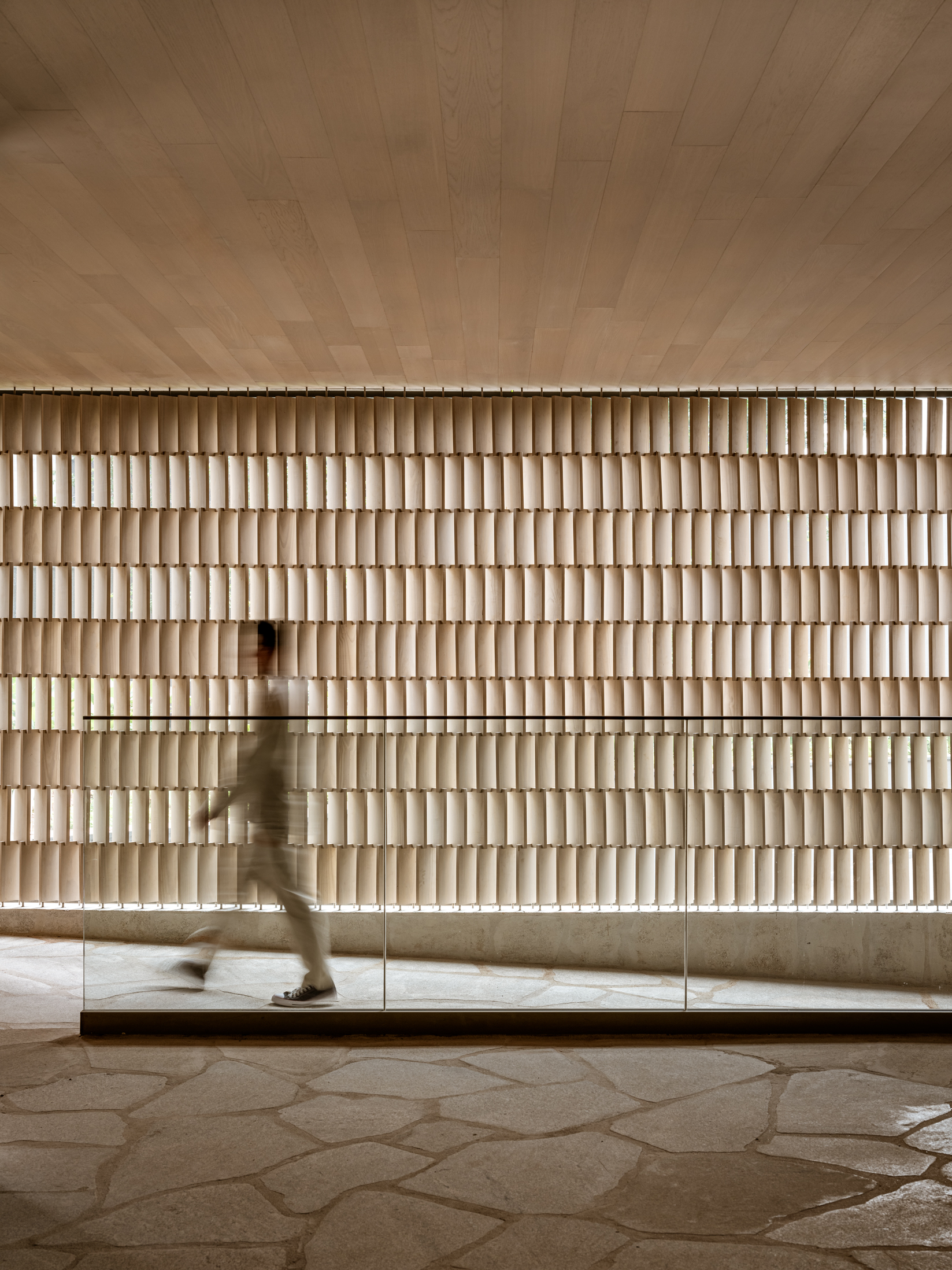
Local architect Arthur Casas designed an impressive, contemporary tower that cleverly folds the hotel and luxury residences into an oddly shaped site defined by only three streets. To highlight the hotel entrance along Henrique Monteiro Street, he tapped São Paulo-based landscape architect André Paoliello, who used the building’s generous 9m setback to create a series of micro forests planted with native ipé trees and large, dramatic Brazilian Monstera Deliciosa plants. These clusters provide the curb appeal that new city regulations require and serve as a design feature both outside and indoors.
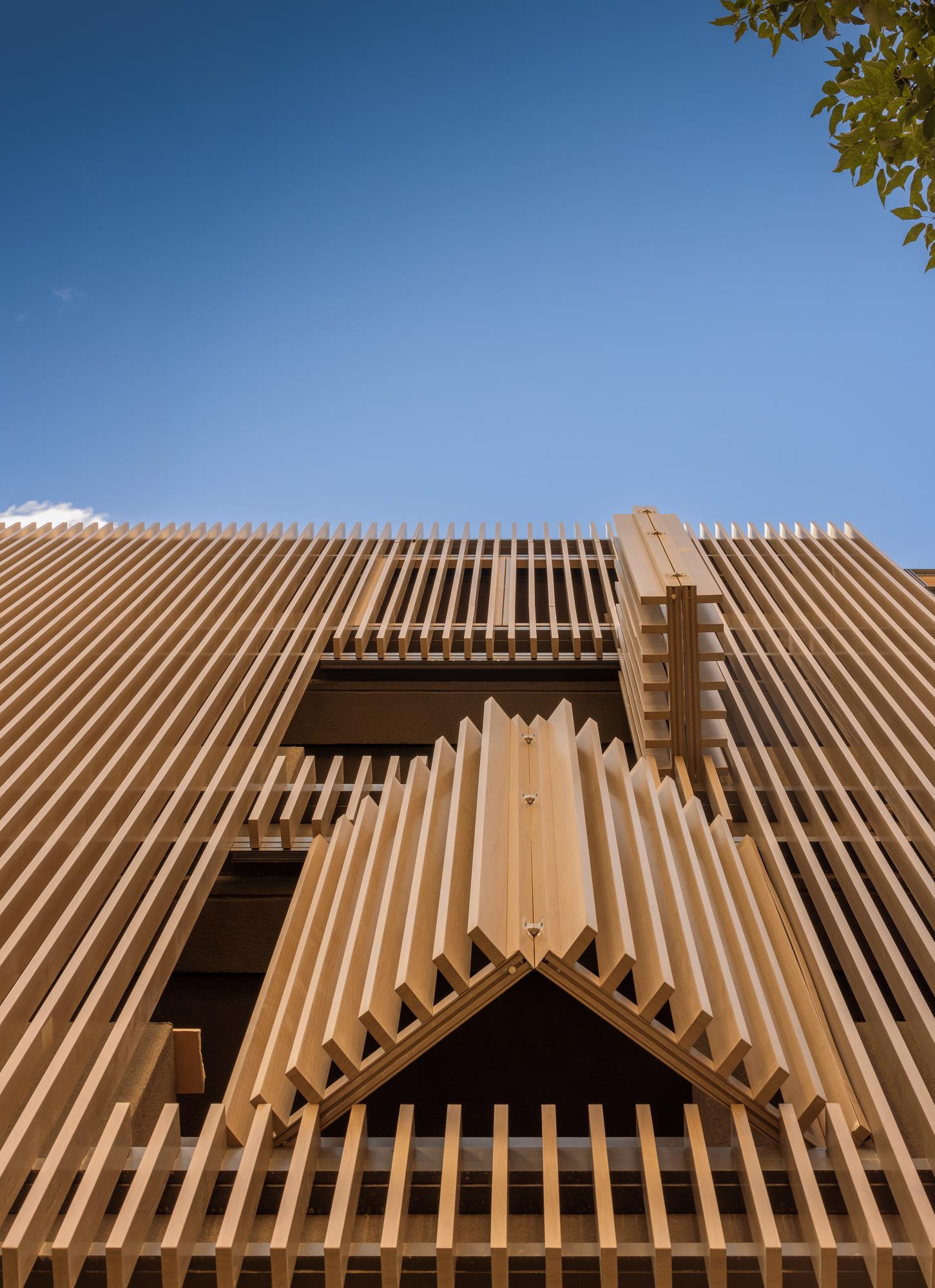
Inside the long, light-filled hotel lobby, floor-to-ceiling plate glass windows make the tropical flora outside omnipresent and showcase another garden on the opposite side of the space, part of an interior courtyard that is open to the sky and features a subtle yet large-scale installation by contemporary Brazilian artist and writer Nuno Ramos, Mácula (1994). The accents of green over Casas’ minimal, tone-on-tone scheme of rich, natural materials are applied in elegant continuity across the public spaces and amenity areas and, above the trees, in the guestrooms, where green marble, leather and hand-woven bed throws carry the concept.
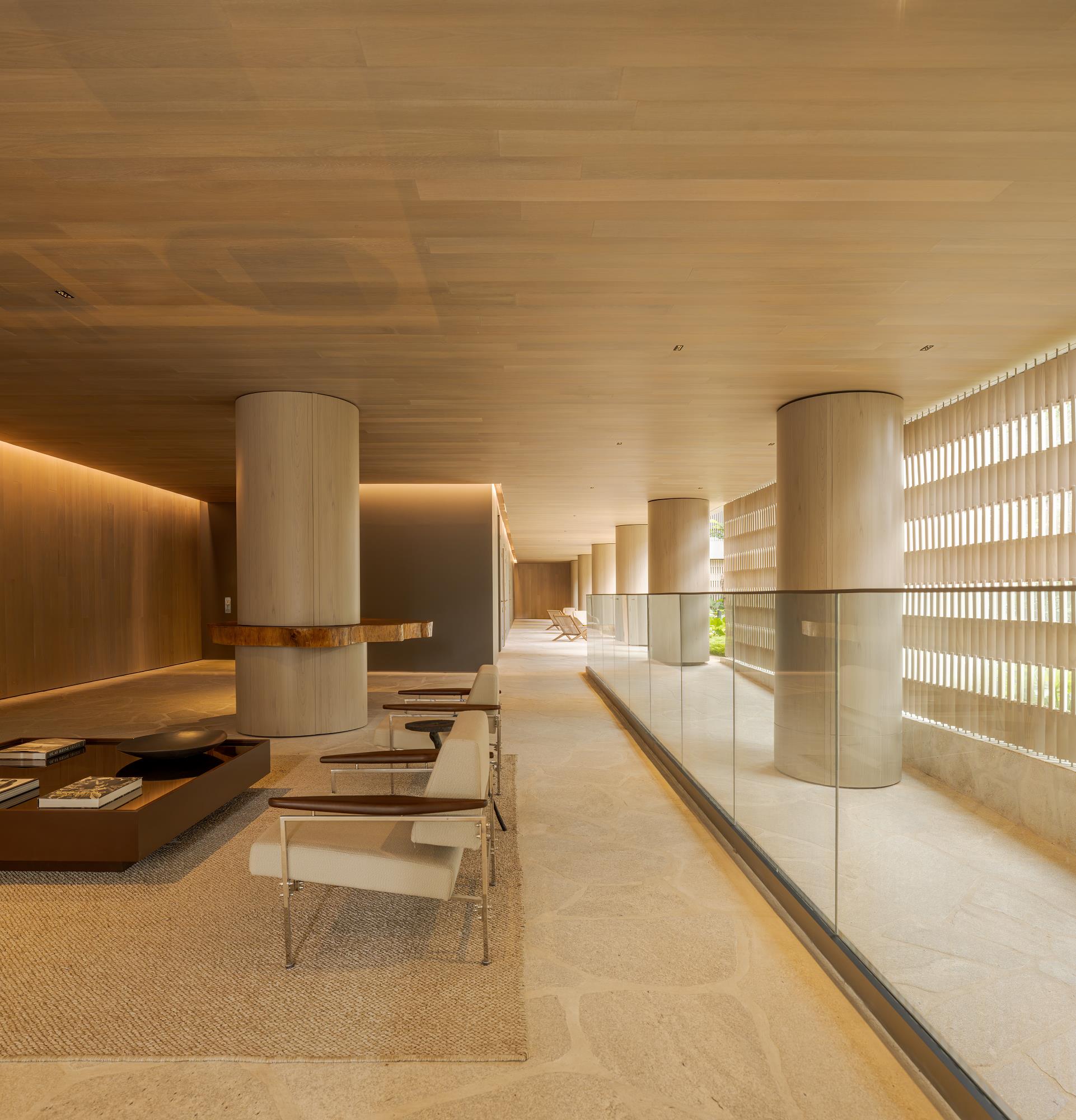
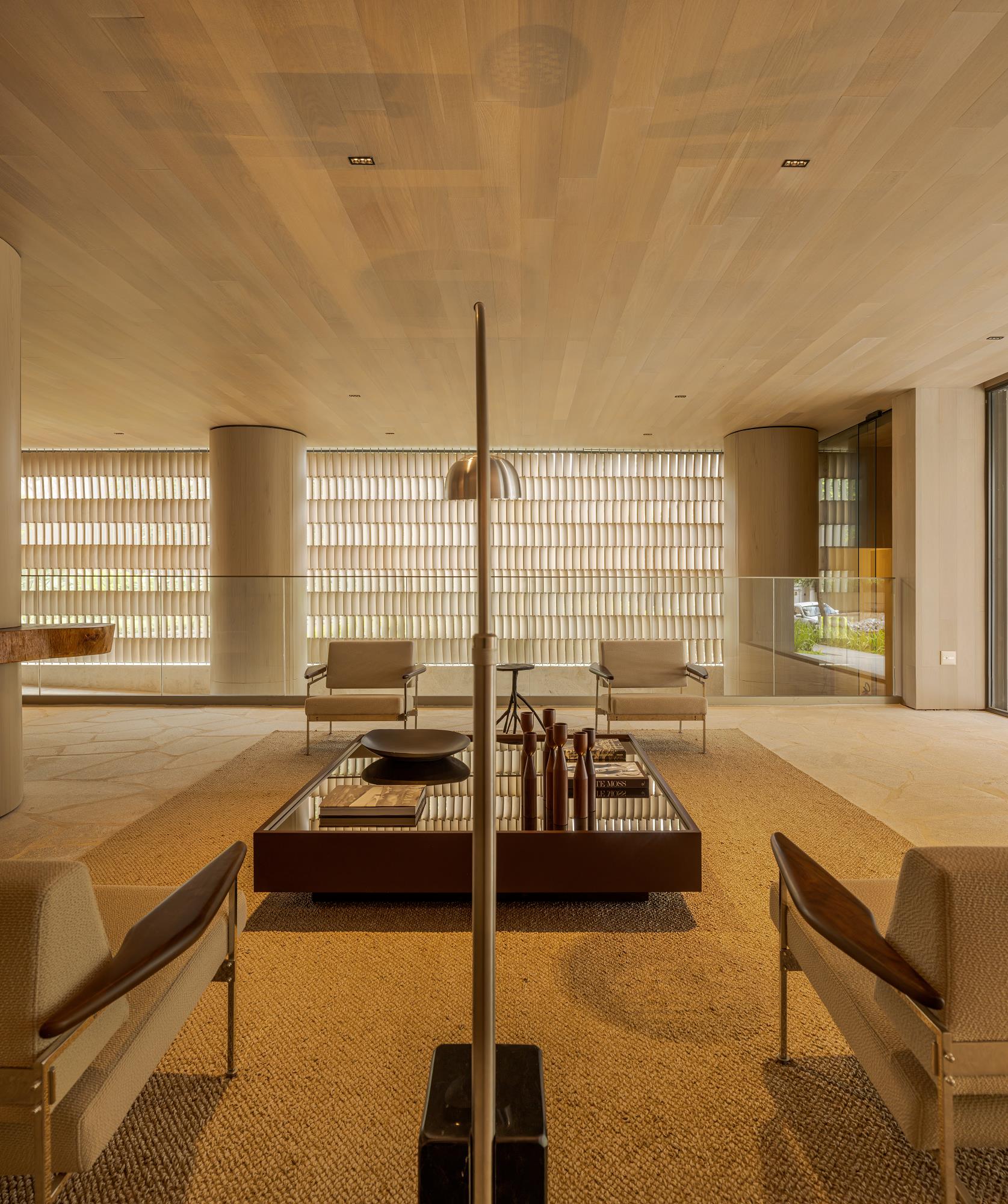
A well-curated mix of furniture pieces by master designers past and present, foreign and domestic – count Arthur Casas among them – are also featured throughout the property. Warren Platner’s namesake armchair stands out among the group, striking a commanding presence at the elegant lobby bar and beyond in Bistrô Charlô, the hotel’s centrepiece restaurant.
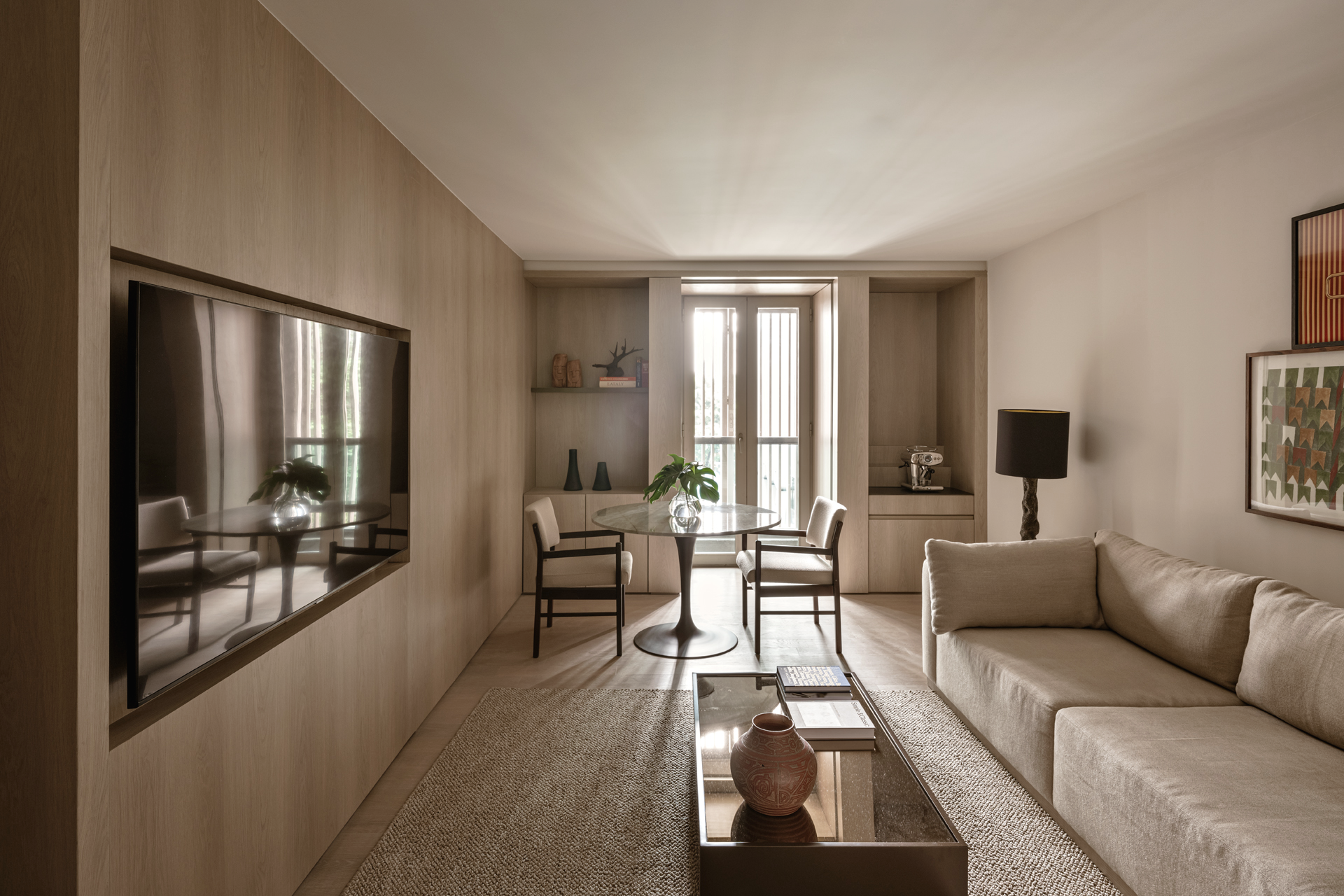

Bistrô Charlô has been a São Paulo institution for the past 35 years, so when renowned restauranteur Charlô Whately agreed to move his storied French bistro into the Pulso, it was something of a coup for Suriani. It was an opportunity for Whately to launch a new era in his storied career and his first bakery, Cha Cha Boulangerie, at the opposite end of the hotel lobby. Both have launched (to great success), full of Whatley’s devotees, hotel guests, and area residents from morning to night – and even past midnight, when Whatley provides a decadent bar menu at Sarau Bar, the exclusive lounge requisite in every stylish boutique property.
Wallpaper* Newsletter
Receive our daily digest of inspiration, escapism and design stories from around the world direct to your inbox.

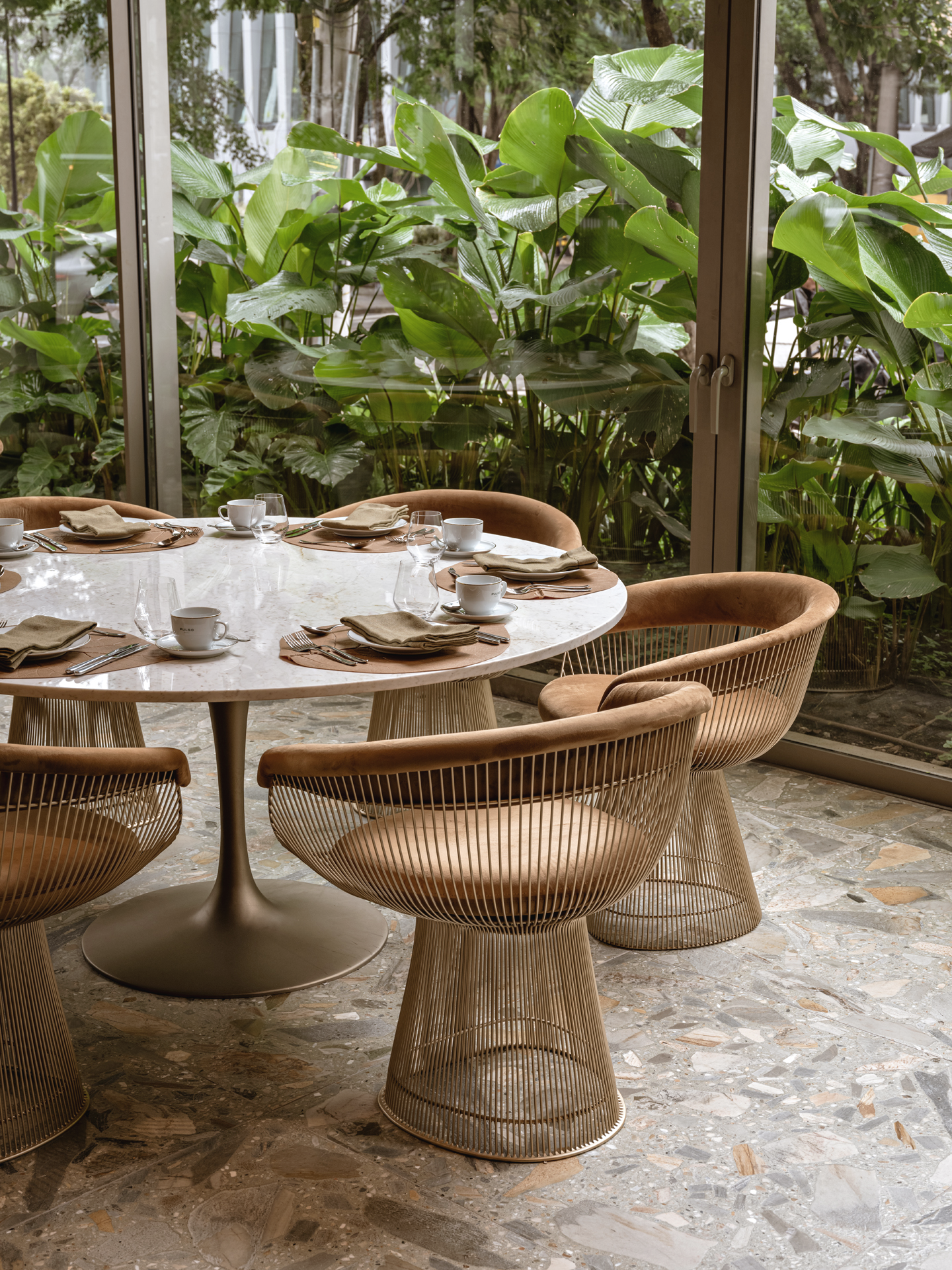
The intimate, 30-seat bar and live music venue sits at the hotel’s heart and is dedicated to Brazilian music in all its beautiful breadth and depth. ‘We wanted to create a place where guests and locals could get in touch with the local sound through bands and DJs,’ said Suriani. ‘It’s my favourite part of the hotel.’ He hired famous São Paulo-based music producer Rômulo Fróes to curate the live programme, and when the stage is dark, top local DJ Victor Kurc handpicks the music for what might be the city’s first proper listening room. Of course, Sarau Bar wouldn’t work without Gabriel Santana, who is considered by many to be the best mixologist in the country.
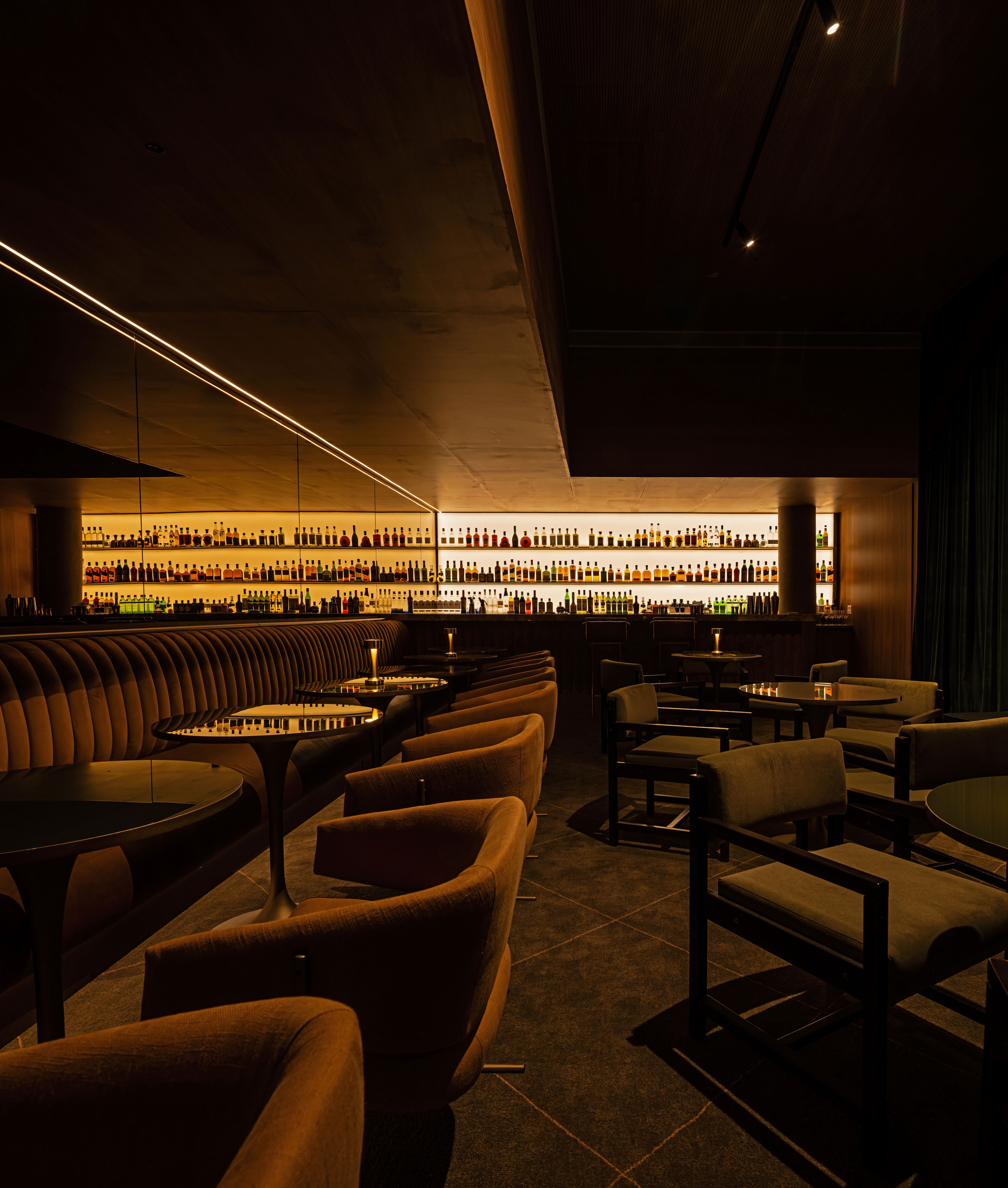
It all adds up at the Pulso Hotel, where Otavio Suriani and his talented group of Paulista collaborators have created the new boutique hotel that São Paulo should have had long ago. It’s a property born of the city’s recent progress but reflects a long cultural legacy.
Find Pulso Hotel at 154 R. Henrique Monteiro, São Paulo, Brazil, pulsohotel.com
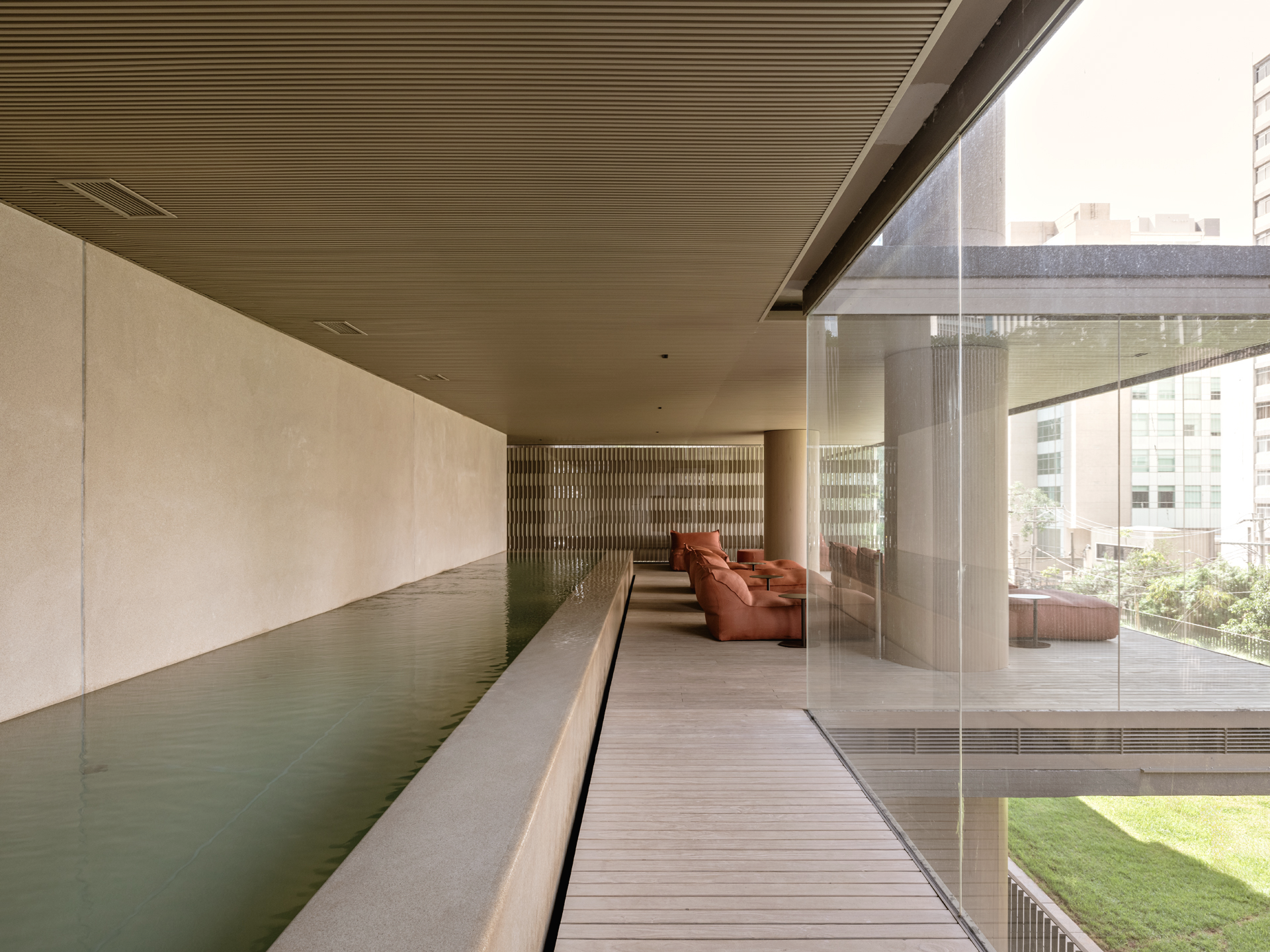

Scott Mitchem is one of the longest-tenured Wallpaper* contributors, joining the team in 1999 after attending Purdue University and moving to New York City from his hometown of Chicago. He started as an editorial associate, later served as Brazil Editor-at-Large while living in São Paulo, and is currently a contributing editor based in Miami. Scott covers design, architecture, travel, and all things Brazil while working as an executive in design and real estate development and working towards a Master’s Degree at Georgetown University. He has written for many other publications and was one of several authors who recently contributed to The Architecture of Studio MK27, a book by Rizzoli chronicling the history of the acclaimed Brazilian architecture studio founded by Marcio Kogan.
-
 Warp Records announces its first event in over a decade at the Barbican
Warp Records announces its first event in over a decade at the Barbican‘A Warp Happening,' landing 14 June, is guaranteed to be an epic day out
By Tianna Williams
-
 Cure your ‘beauty burnout’ with Kindred Black’s artisanal glassware
Cure your ‘beauty burnout’ with Kindred Black’s artisanal glasswareDoes a cure for ‘beauty burnout’ lie in bespoke design? The founders of Kindred Black think so. Here, they talk Wallpaper* through the brand’s latest made-to-order venture
By India Birgitta Jarvis
-
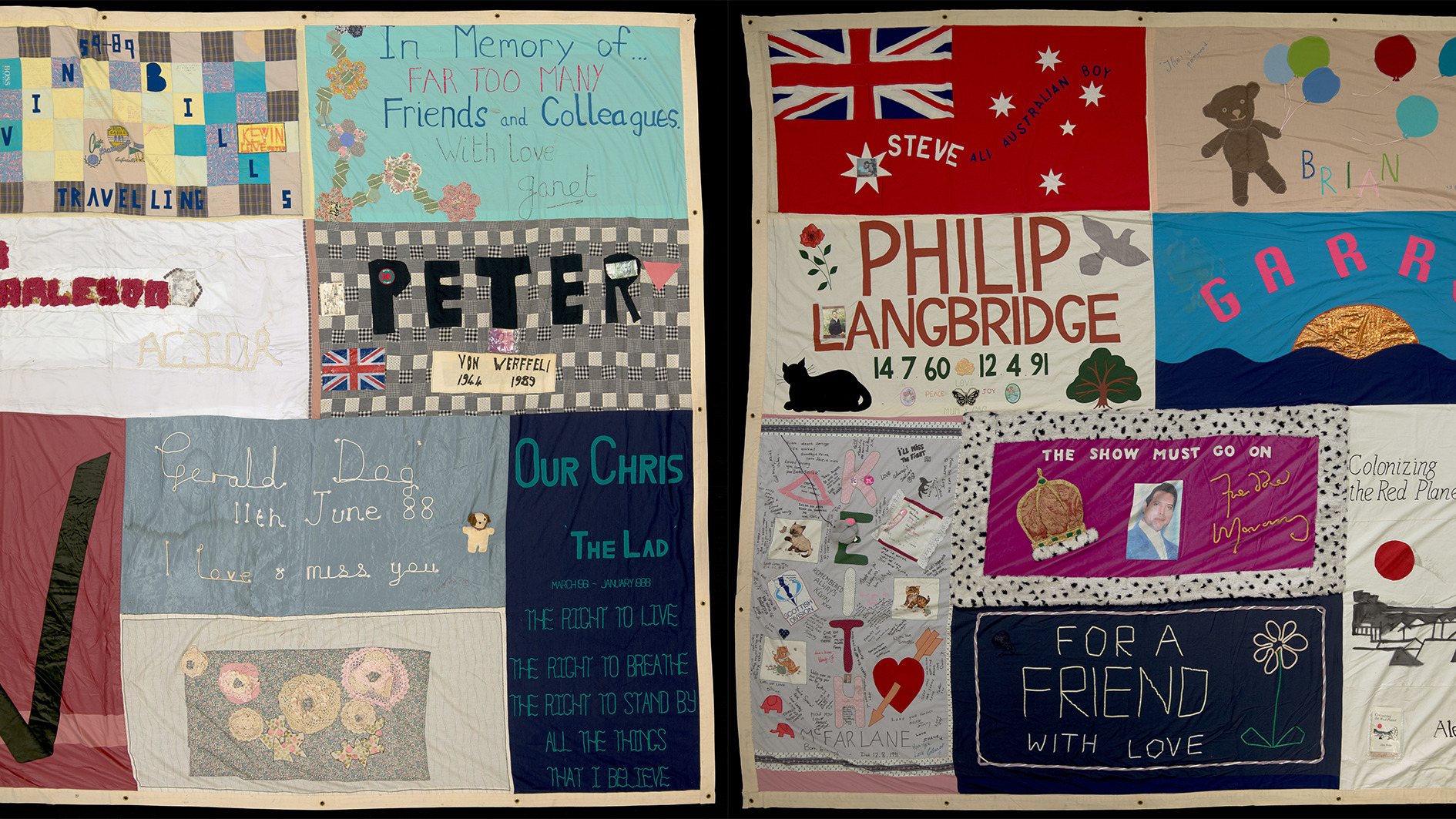 The UK AIDS Memorial Quilt will be shown at Tate Modern
The UK AIDS Memorial Quilt will be shown at Tate ModernThe 42-panel quilt, which commemorates those affected by HIV and AIDS, will be displayed in Tate Modern’s Turbine Hall in June 2025
By Anna Solomon
-
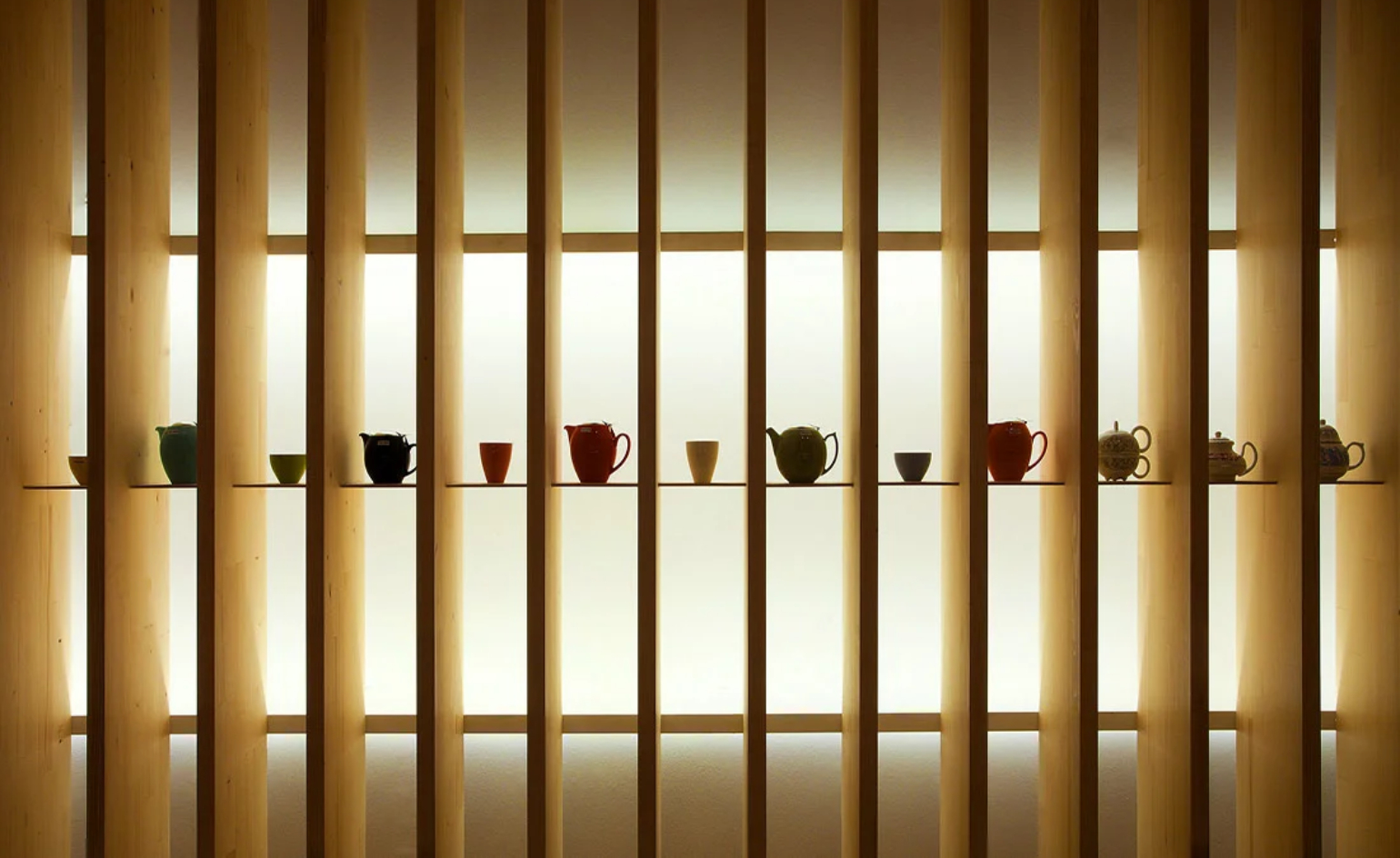 Tour the best contemporary tea houses around the world
Tour the best contemporary tea houses around the worldCelebrate the world’s most unique tea houses, from Melbourne to Stockholm, with a new book by Wallpaper’s Léa Teuscher
By Léa Teuscher
-
 Brazilian island hotel Auka Boipeba offers a unique approach to the alfresco experience
Brazilian island hotel Auka Boipeba offers a unique approach to the alfresco experienceDesigned by architecture studio FGMF, Auka Boipeba describes itself as an inn, though it’s certainly unlike any inn we’ve ever been to
By Daven Wu
-
 Soho House’s beloved home-from-home concept lands in fun-loving, hard-working São Paulo
Soho House’s beloved home-from-home concept lands in fun-loving, hard-working São PauloSoho House São Paulo is the brand's first foothold in South America, occupying a historic corner of the Brazil mega-metropolis
By Rainbow Nelson
-
 Janeiro — Rio de Janeiro, Brazil
Janeiro — Rio de Janeiro, BrazilBy Lauren Holmes
-
 B Hotel — Brasilia, Brazil
B Hotel — Brasilia, BrazilBy Daven Wu
-
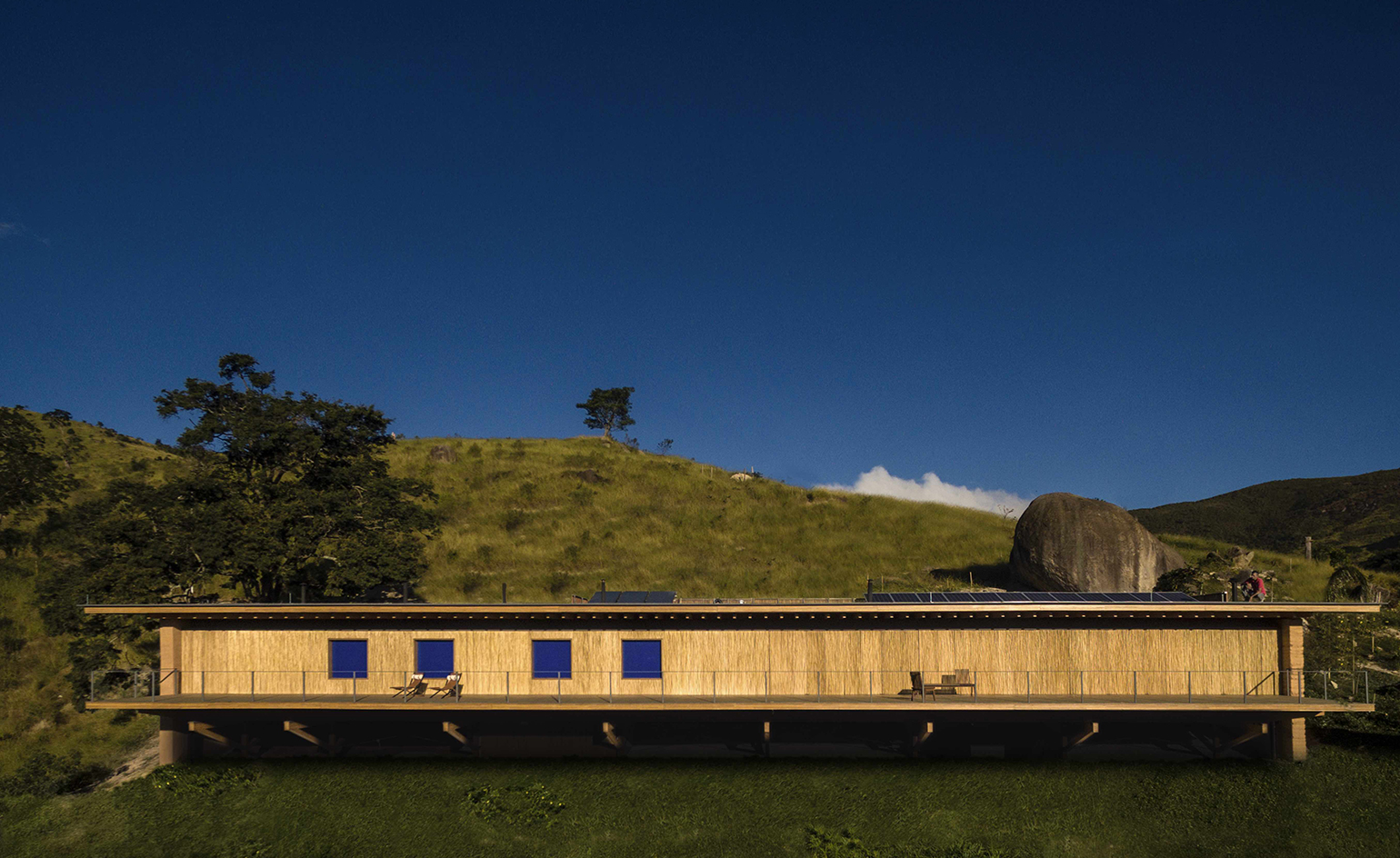 The Catuçaba Hideaway — São Paulo, Brazil
The Catuçaba Hideaway — São Paulo, BrazilBy Daven Wu
-
 Fasano — Angra dos Reis, Brazil
Fasano — Angra dos Reis, BrazilBy Scott Mitchem
-
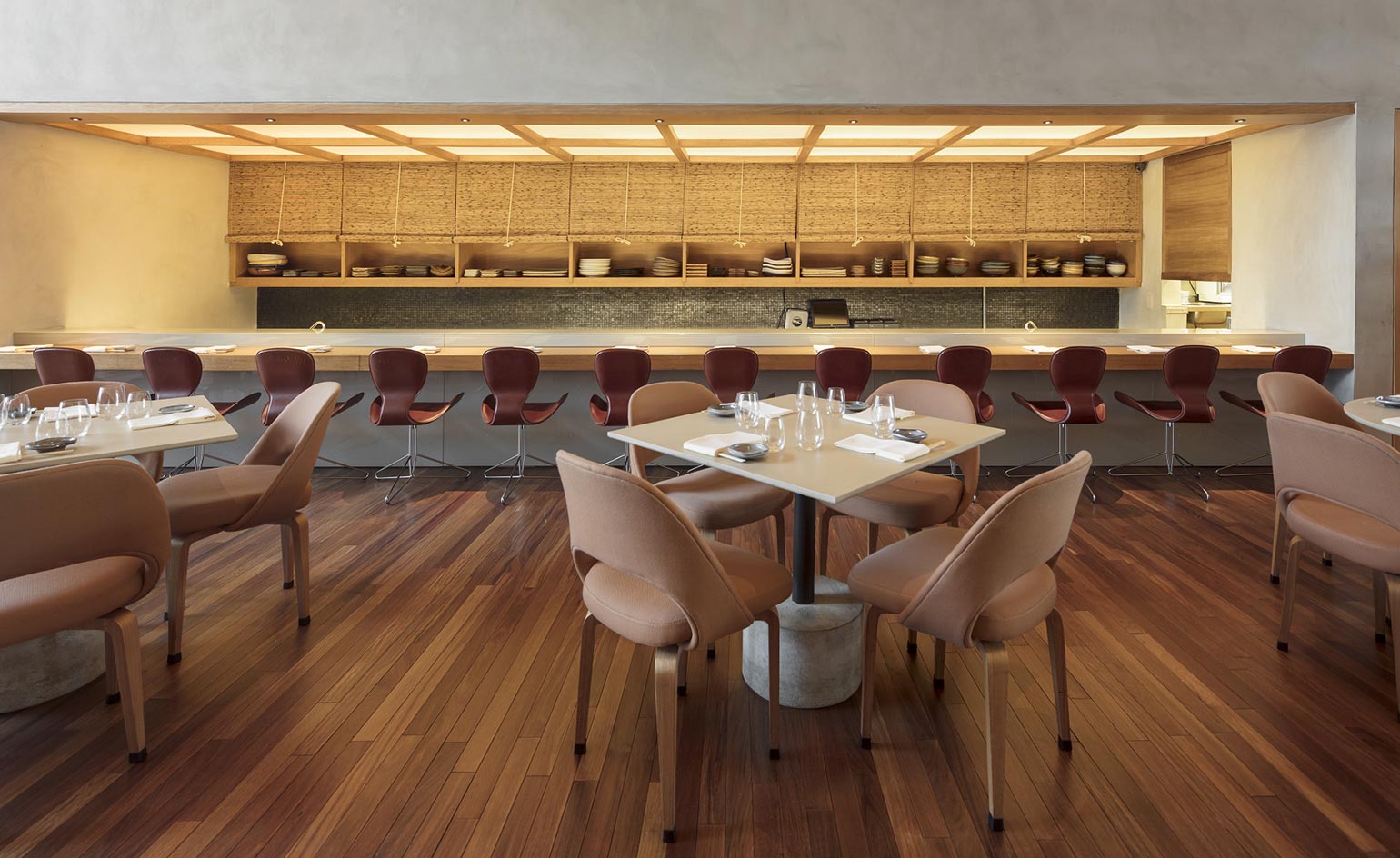 Kosushi — São Paulo, Brazil
Kosushi — São Paulo, BrazilBy Scott Mitchem